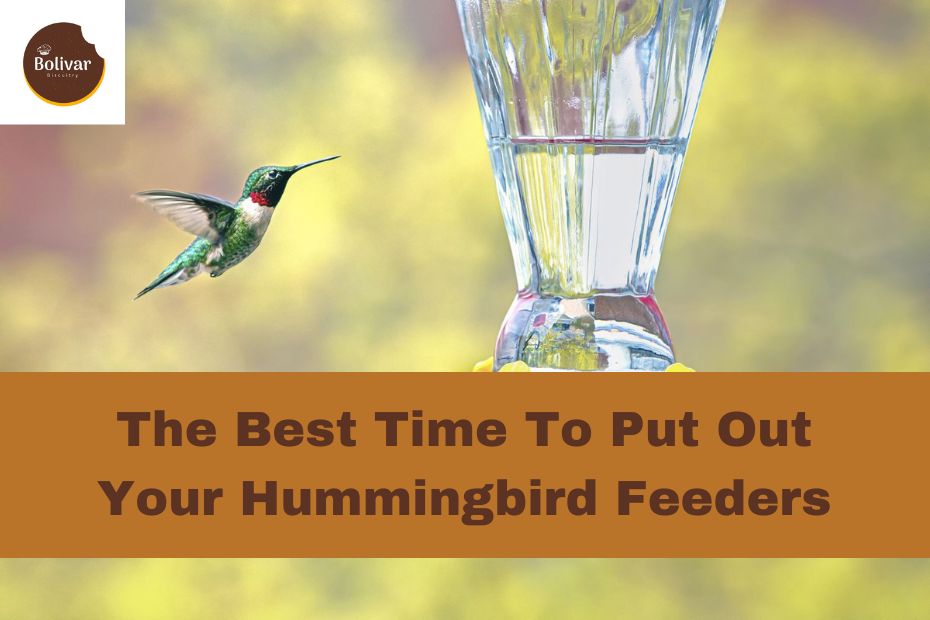Hummingbirds are fascinating creatures known for their vibrant colors, incredible agility, and insatiable appetite for nectar. If you’re eager to attract these delightful birds to your yard, one of the best ways to do so is by putting out hummingbird feeders. But when is the best time to set up your feeders to ensure you attract the most hummingbirds? In this article, we’ll explore the optimal timing for putting out your hummingbird feeders and provide tips for maximizing your chances of attracting these tiny avian wonders.
Understanding Hummingbird Migration Patterns:
Hummingbirds are migratory birds, meaning they travel from one region to another in search of food, nesting sites, and favorable weather conditions. Understanding their migration patterns is key to knowing when to put out your feeders. In North America, hummingbirds typically begin their migration in the spring, heading north from their wintering grounds in Central and South America. They arrive in different parts of the continent at various times, depending on factors such as temperature and the availability of nectar-rich flowers.
The Best Time to Put Out Your Hummingbird Feeders:
The best time to put out your hummingbird feeders varies depending on your location and the species of hummingbirds in your area. In general, you’ll want to set up your feeders a few weeks before the expected arrival of hummingbirds in your region. This ensures that the birds will have access to nectar as soon as they arrive and increases your chances of attracting them to your yard.
For most regions of North America, early spring is an ideal time to put out hummingbird feeders, as it coincides with the arrival of migrating hummingbirds. In more southern areas where hummingbirds may overwinter, you may be able to put out feeders as early as late winter or even year-round.
Tips for Attracting Hummingbirds to Your Feeders:
In addition to timing, there are several other factors to consider when setting up your hummingbird feeders to maximize their appeal to these tiny birds:
- Choose the Right Feeder: Opt for feeders with bright colors, such as red or orange, to attract hummingbirds’ attention. Look for feeders with perches and multiple feeding ports to accommodate multiple birds at once.
- Use the Right Nectar: Prepare a simple nectar solution using one part white granulated sugar to four parts water. Avoid using honey, artificial sweeteners, or red dye, as these can be harmful to hummingbirds.
- Place Feeders Strategically: Hang your feeders in a location that offers protection from wind and rain and provides easy access for hummingbirds. Consider placing them near flowering plants or other sources of natural nectar to attract birds to your yard.
- Keep Feeders Clean: Regularly clean and refill your feeders to prevent mold and bacteria growth. Clean them with hot water and a bottle brush every few days, and change the nectar solution every three to four days, or more frequently in hot weather.
Conclusion:
Putting out your hummingbird feeders at the right time is essential for attracting these enchanting birds to your yard. By timing your feeder setup to coincide with the arrival of migrating hummingbirds in your area and following the tips outlined in this article, you can create an inviting oasis that hummingbirds will flock to year after year.
FAQs:
When is the best time to take down hummingbird feeders?
It’s best to leave hummingbird feeders up until a few weeks after you’ve seen the last hummingbird in your area, as some late-migrating individuals may still be passing through.
How often should I change the nectar in my feeders?
Change the nectar in your feeders every three to four days, or more frequently in hot weather, to prevent spoilage and keep hummingbirds healthy.
Can I attract hummingbirds without using feeders?
Yes! Planting a variety of nectar-rich flowers, such as trumpet vine, bee balm, and salvia, can attract hummingbirds to your yard naturally.
How can I deter bees and wasps from my hummingbird feeders?
Choose feeders with bee guards or ant moats to prevent bees and wasps from accessing the nectar. Keeping feeders clean and free of drips can also help deter these insects.
Are there any other foods I can offer hummingbirds besides nectar?
In addition to nectar, hummingbirds may eat small insects and spiders for protein. You can provide supplemental protein sources by hanging a small dish of fruit flies or offering hummingbird-friendly insects like mealworms.
